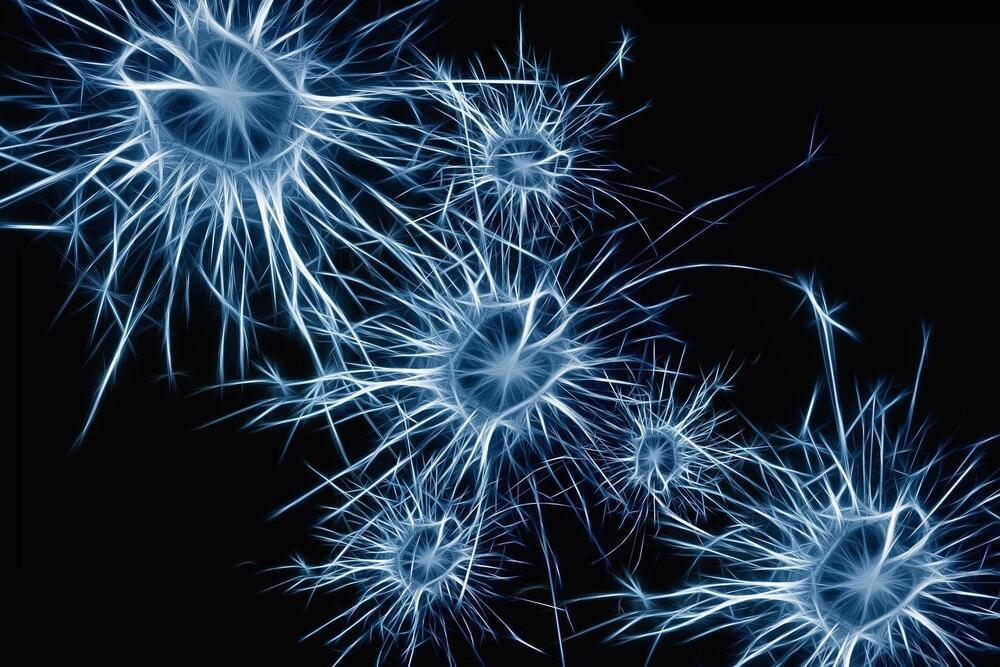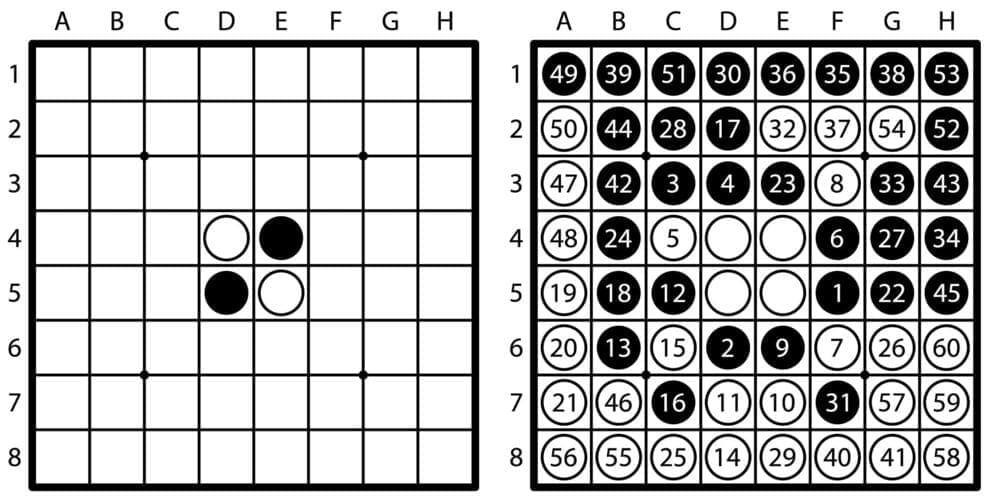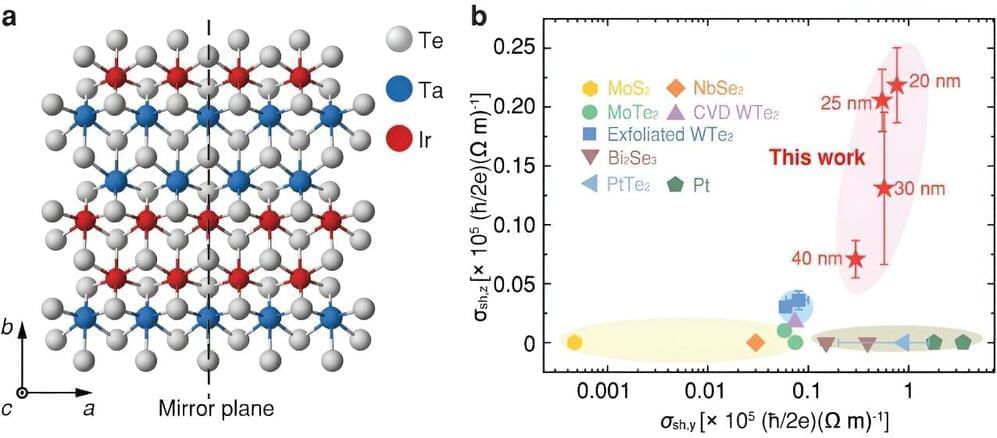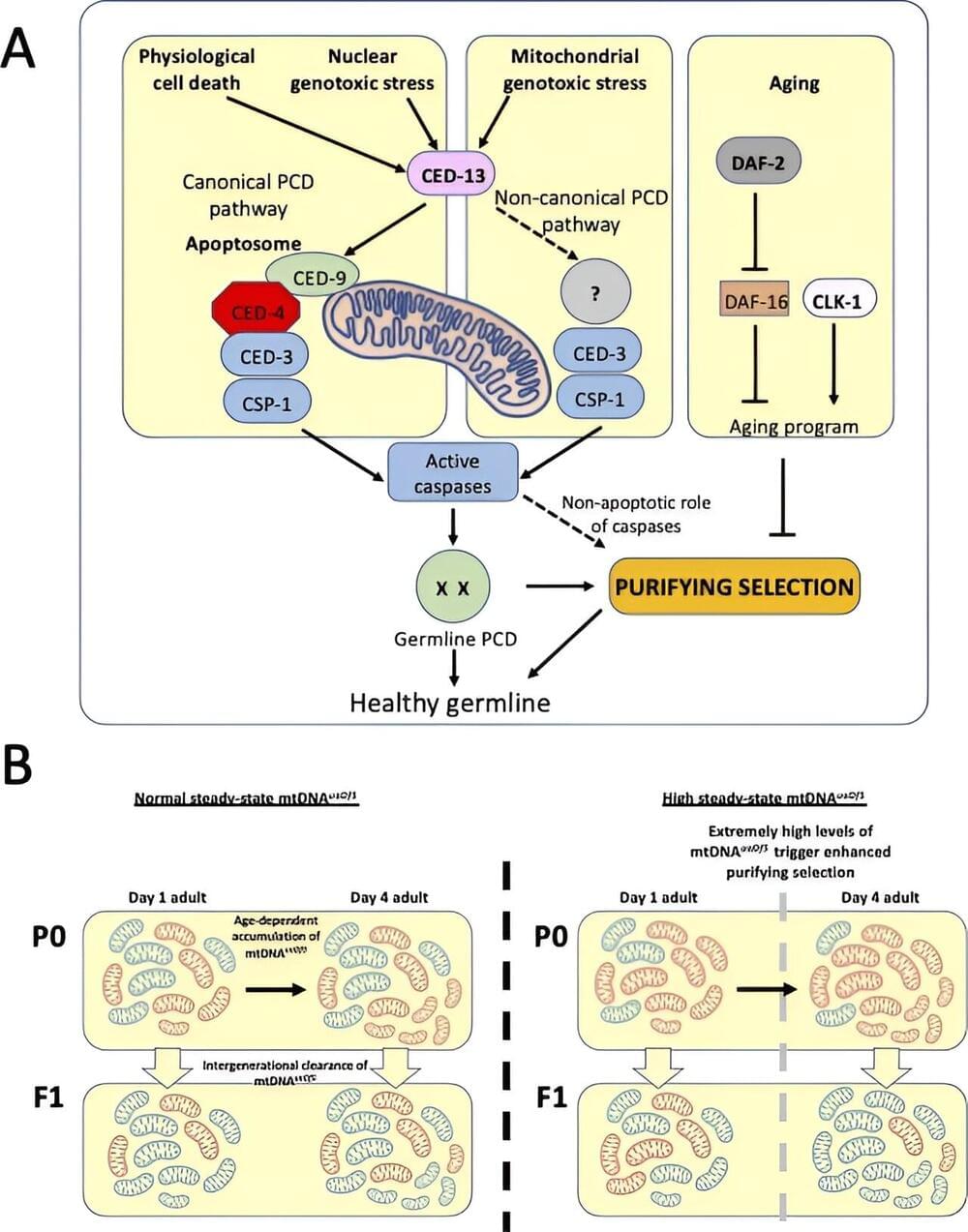Page 1172
Nov 9, 2023
What makes us human? Researchers uncover clues behind brain evolution
Posted by Shubham Ghosh Roy in categories: biotech/medical, evolution, neuroscience
The human brain is three times bigger than a chimp’s and more spherical than a Neanderthal’s. Within a maze of bumps and grooves, neurons converse in distinct patterns that give humans unique cognitive abilities.
Scientists haven’t fully deciphered those patterns. But researchers at UT Southwestern Medical Center are determined to solve the molecular mystery of what makes us human.
In a study published in the journal Nature, they compared brain cell types and activities among humans, chimpanzees and rhesus monkeys. Human brains had more of a kind of cell that may help them adapt based on new experience and heal from injury. Certain human neurons also had more of a gene that affects language development.
Nov 9, 2023
Japanese scientist conquers the board game Othello
Posted by Saúl Morales Rodriguéz in categories: entertainment, supercomputing
“Othello is now solved.” With that summation, a researcher at a Japanese computer company confirmed yet another milestone in supercomputing achievement.
Othello, a 140-year-old game rooted in the Shakespearean drama of the same name that depicts conflict between the Moor of Venice and Desdemona, does not seem complex at first glance. It is played on a board with black and white disks strategically positioned in squares along eight rows and eight columns.
The challenge, according to bioinformatician Hiroki Takizawa, is to conceive a game plan “with no mistake made by either player.”
Nov 9, 2023
Researchers demonstrate field-free switching of a commercial PMA ferromagnet at room temperature
Posted by Saúl Morales Rodriguéz in categories: computing, nanotechnology, open access
Magnetic random-access memories (MRAMs) are data storage devices that store digital data within nanomagnets, representing it in binary code (i.e., as “0” or “1”). The magnetization of nanomagnets inside these memory devices can be directed upward or downward.
Over the past decade, electronics engineers have introduced techniques that can switch this direction using in-plane electrical currents. These techniques ultimately enabled the creation of a new class of MRAM devices, referred to as spin-orbit torque (SOT)-MRAMs.
While existing techniques to switch magnetization direction of nanomagnets in SOT-MRAMs have proved effective, many only work if external magnetic fields are aligned with the direction of the electric current. In a recent paper published in Nature Electronics, researchers at the National University of Singapore demonstrated the field-free switching of the perpendicular magnetic anisotropy (PMA) ferromagnet cobalt iron boron (CoFeB) at ambient conditions.
Nov 9, 2023
Zen and the art of mitochondrial maintenance: The machinery of death makes a healthier life
Posted by Saúl Morales Rodriguéz in categories: biotech/medical, health
While we all aspire for a long lifespan, what is most coveted is a long period of vigor and health, or “healthspan,” that precedes the inevitable decline of advancing age. Researchers at UC Santa Barbara have discovered that instruments of death that cells use to commit suicide when things go wrong contribute to making a longer and healthier life by revitalizing the specialized cellular compartments called mitochondria.
Mitochondria generate the energy for all of our activities, from movement to thought. These power plants inside our cells descended from what were once free-living bacteria.
“We are a sort of hybrid creature that arose from two independent evolutionary lineages: mitochondria, which were once bacteria, and the rest of the cell surrounding them,” notes Joel Rothman, a professor of molecular biology whose lab conducted the research.
Nov 9, 2023
People who contribute least in crowdsourcing can do the most to improve a public good, says study
Posted by Saúl Morales Rodriguéz in category: computing
Whether talking about the office kitchen, hiking trails or ratings on Yelp, there are always people who put in effort to leave those spaces better. There are also those who contribute nothing to that public good.
New research using large-scale online experiments suggests that rewarding people to contribute to a virtual public good, such as a simulated online rating for a ferry system, increased the accuracy of the ratings and improved the overall quality of that resource.
The multidisciplinary team, including researchers from the University of California, Davis; Hunter College, College of New York; the Max Planck Institute for Empirical Aesthetics; and Princeton University tested ideas about collective action in a simulation incorporating more than 500 people worldwide. Team expertise included communication science, sociology, computer science, psychology and animal behavior.
Nov 9, 2023
Innovative photoresist materials pave the way for smaller, high performance semiconductor chips
Posted by Saúl Morales Rodriguéz in categories: computing, nanotechnology, particle physics
For more than 50 years, the semiconductor industry has been hard at work developing advanced technologies that have led to the amazing increases in computing power and energy efficiency that have improved our lives. A primary way the industry has achieved these remarkable performance gains has been by finding ways to decrease the size of the semiconductor devices in microchips. However, with semiconductor feature sizes now approaching only a few nanometers—just a few hundred atoms—it has become increasingly challenging to sustain continued device miniaturization.
To address the challenges associated with fabricating even smaller microchip components, the semiconductor industry is currently transitioning to a more powerful fabrication method—extreme ultraviolet (EUV) lithography. EUV lithography employs light that is only 13.5 nanometers in wavelength to form tiny circuit patterns in a photoresist, the light-sensitive material integral to the lithography process.
The photoresist is the template for forming the nanoscale circuit patterns in the silicon semiconductor. As EUV lithography begins paving the way for the future, scientists are faced with the hurdle of identifying the most effective resist materials for this new era of nanofabrication.
Nov 9, 2023
The Kynurenine/Tryptophan Ratio: An Integrated Measure Of Many Pro- And Anti-Inflammatory Factors
Posted by Mike Lustgarten in categories: biotech/medical, genetics, life extension
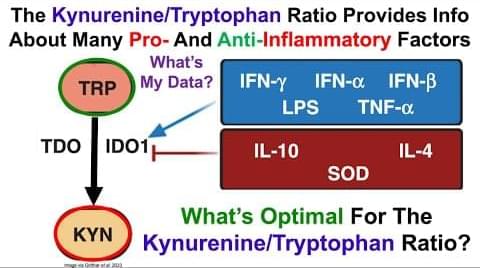
Join us on Patreon! https://www.patreon.com/MichaelLustgartenPhD
Discount Links:
At-Home Metabolomics: https://www.iollo.com?ref=michael-lustgarten.
Use Code: CONQUERAGING At Checkout.
Nov 9, 2023
OpenAI’s Altman says today’s AI will be “quaint” by next year, talks GPT-5
Posted by Dan Kummer in categories: materials, robotics/AI
Agi, if you can see or hear this. WE Eagerly Await and Welcome Your Arrival!!!
Update from November 9, 2023:
During a Q&A session at OpenAI’s developer conference, Altman reiterated that GPT-5 is not yet concrete. OpenAI still has “a lot” of things to figure out before it can train a model it calls GPT-5, Altman said.
Continue reading “OpenAI’s Altman says today’s AI will be ‘quaint’ by next year, talks GPT-5” »
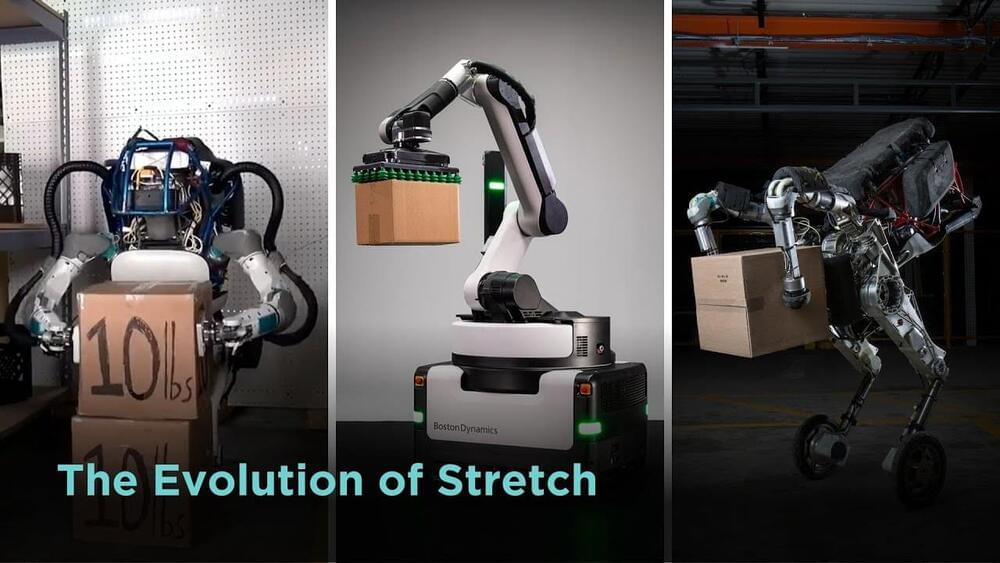
Boston Dynamics Starting from the technological building blocks of Atlas, Stretch has the mobility, power, and intelligence to automate warehousing’s toughest tasks. See how we went from initial idea to a product delivering value in the real world.

